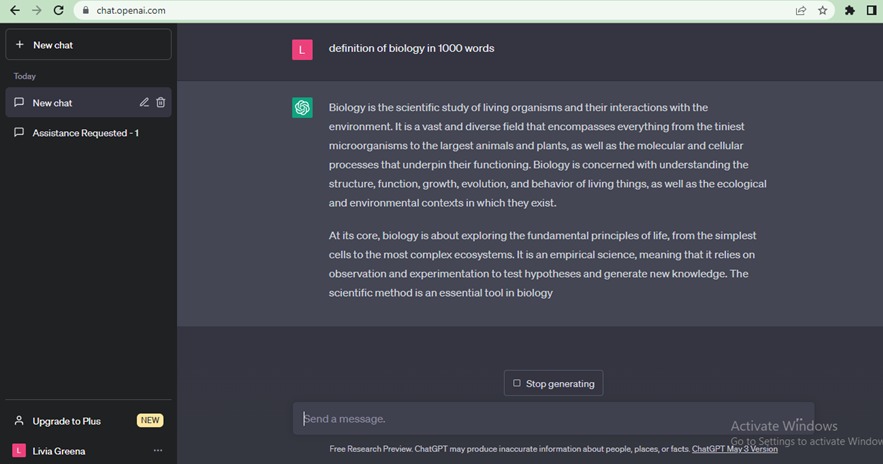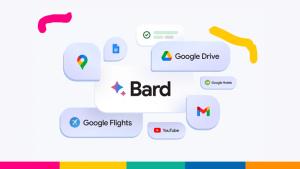Call Us: (256)762 179048

ChatGPT is a language model developed by OpenAI. It is a type of artificial intelligence that uses deep learning techniques to generate human-like text based on the input it receives.
In content marketing, ChatGPT can be used in the following ways:
Chatbot development
ChatGPT can be used to develop chatbots for websites and customer service platforms. These chatbots can answer common customer queries and provide information about products or services.

Chatbots are computer programs designed to simulate conversation with human users, especially over the Internet. They can be integrated into websites, messaging platforms, and mobile apps to provide customer service, answer frequently asked questions, assist with transactions, and perform various other tasks.
Chatbots use natural language processing (NLP) and machine learning algorithms to understand and respond to user inputs. They can be programmed to respond to specific keywords or phrases, and they can also be trained to improve their responses over time based on the interactions they have with users.
There are two main types of chatbots: rule-based chatbots and machine learning-based chatbots. Rule-based chatbots follow a pre-determined set of rules to respond to user inputs, while machine learning-based chatbots use algorithms to generate responses based on the input they receive.
Chatbots are widely used in industries such as retail, banking, healthcare, and customer service to improve customer experience, automate repetitive tasks, and reduce operational costs.
Content generation:
ChatGPT can be used to generate articles, blog posts, product descriptions, and other types of content automatically.

Here are some common techniques for generating content:
- Keyword research: Identify keywords and phrases that your target audience is searching for and create content around those topics.
- Repurposing existing content: Turn blog posts, videos, or other forms of content into different formats, such as infographics, slideshows, or social media posts.
- Interviews and expert quotes: Reach out to industry experts, thought leaders, or customers to gather insights and perspectives to include in your content.
- Data and statistics: Use data and statistics to support your arguments and make your content more engaging and trustworthy.
- User-generated content: Encourage your audience to create and share their own content, such as reviews, testimonials, or photos, and incorporate it into your own content marketing efforts.
- Storytelling: Use storytelling to engage your audience and communicate your brand message in an emotional and memorable way.
- Lists and how-to guides: Create lists of tips, resources, or best practices, or write how-to guides that provide step-by-step instructions for specific tasks or problems.
By using a combination of these techniques, you can create a diverse range of content that appeals to your target audience and helps you achieve your marketing goals.
Regenerate response
Social media management:
ChatGPT can be used to generate social media posts, respond to customer inquiries, and manage customer interactions on platforms like Facebook, Twitter, and Instagram.

Here are some best practices for social media management:
- Define your goals: Determine what you want to achieve with your social media presence and set specific, measurable goals accordingly.
- Know your audience: Conduct market research to understand your target audience and their behavior on social media.
- Choose the right platforms: Identify the social media platforms where your target audience is most active and focus your efforts there.
- Develop a content strategy: Plan the type of content you want to publish, how often you will publish it, and the tone and style of your messages.
- Post regularly: Consistently post content that is relevant, valuable, and engaging to your audience to maintain their interest and engagement.
- Monitor and respond to engagement: Regularly check for comments, messages, and reviews, and respond to them promptly and professionally.
- Analyze and adjust: Use analytics tools to track the performance of your social media efforts, identify areas for improvement, and make changes accordingly.
- Collaborate with influencers: Partner with influencers in your industry or niche to expand your reach and tap into new audiences.
By following these best practices, you can effectively manage your social media presence, build a strong and engaged community, and achieve your marketing goals.
Customer service automation:

ChatGPT can be used to provide 24/7 customer support by answering common queries and escalating more complex issues to human agents.
By incorporating ChatGPT into their content marketing strategies, businesses can save time and resources, improve customer engagement, and drive better results.
All content used in this post was generated by ChatGPT
In addiction ChatGPT can have different features just like other Chatbots which include,
- Chatbots: ChatGPT can be used to build chatbots that can provide quick, personalized responses to customer inquiries and help with lead generation and customer support.
- They are computer programs designed to simulate conversation with human users, especially over the Internet. They can be integrated into websites, messaging platforms, and mobile apps to provide customer service, answer frequently asked questions, assist with transactions, and perform various other tasks.
- Chatbots like ChatGPT use natural language processing (NLP) and machine learning algorithms to understand and respond to user inputs. They can be programmed to respond to specific keywords or phrases, and they can also be trained to improve their responses over time based on the interactions they have with users.
- There are two main types of chatbots: rule-based chatbots and machine learning-based chatbots. Rule-based chatbots follow a pre-determined set of rules to respond to user inputs, while machine learning-based chatbots use algorithms to generate responses based on the input they receive.
- Chatbots are widely used in industries such as retail, banking, healthcare, and customer service to improve customer experience, automate repetitive tasks, and reduce operational costs.
- Content creation: ChatGPT can be used to generate written content, such as blog posts, product descriptions, and FAQs.
- Social media management: ChatGPT can be used to generate social media posts and respond to comments, freeing up time for marketers to focus on strategy and engagement.
- Personalization: ChatGPT can be used to personalize marketing messages and website content based on customer behavior and preferences.
- Customer insights: ChatGPT can be used to analyze customer feedback and provide insights that can inform product development and marketing strategies.
Thanks for reading






good article